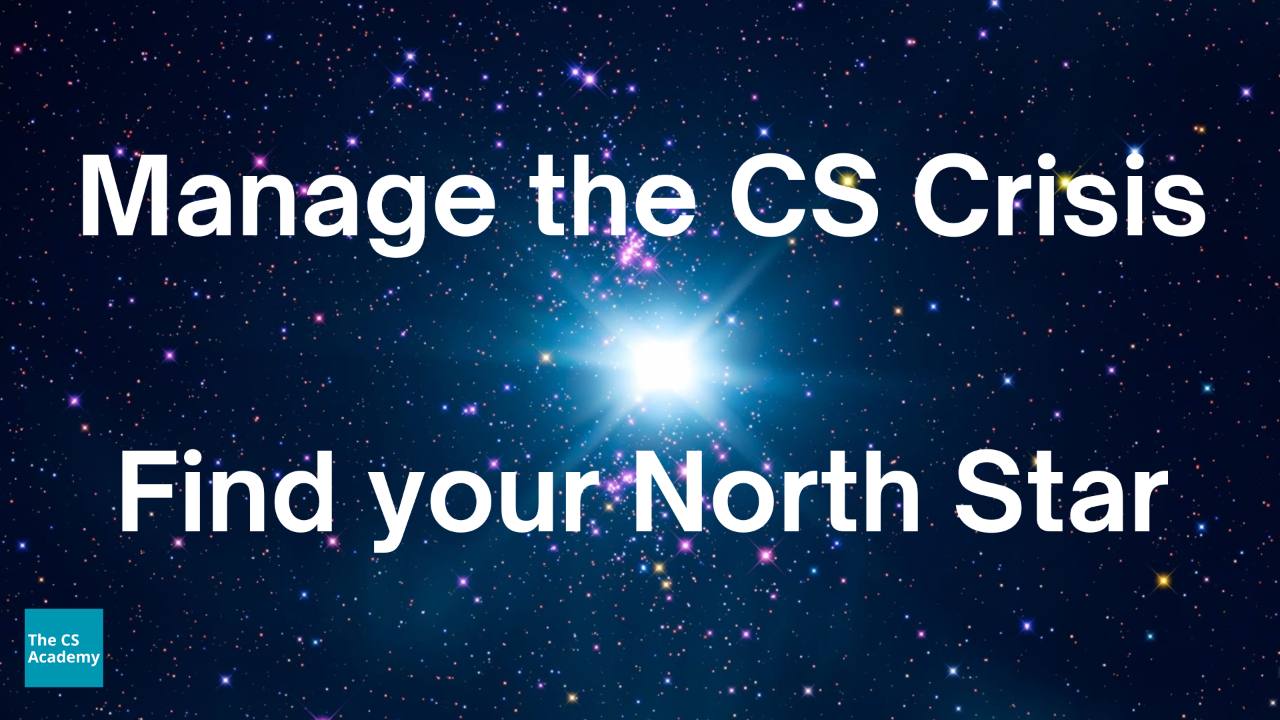Why your Scale-up needs Customer Success Leadership

As a founder or CEO of a scale-up company, you've likely experienced this scenario: Your product is gaining traction, and your sales team is closing more and more deals, but something's missing. Your Account Executives are stretched thin, customer expectations are rising, and suddenly managing post-sales relationships has become more complex than you anticipated.
This is what I call the "Growth Canyon" - that critical inflection point where your company has outgrown its reactive approach to customer management but hasn't yet established the strategic foundation needed for sustainable growth powered by new and existing logos.
The tipping point no one talks about
I've worked with a few scale-ups and observed a pattern. Companies reach a point where:
- AEs can no longer effectively manage both sales and customer relationships
- Customer expectations have evolved beyond basic support
- Churn begins creeping up despite growing sales
- Expansion opportunities are being missed
- The company lacks a coherent post-sales strategy and metrics
This tipping point typically arrives faster than most founders anticipate. The reactive approach that worked in the early days suddenly becomes a liability.
Why Customer Success Leadership is not just another hire
When scale-ups reach this inflection point, the knee-jerk reaction is often to hire a few Customer Success Managers and expect them to figure it out. In my experience, this approach consistently fails.
And here's why: Customer Success requires strategic architecture.
Without executive-level CS leadership, you're essentially asking junior team members to build the plane while flying it - designing processes, creating metrics, implementing technology, and managing customers simultaneously.
The co-pilot approach: strategic CS Leadership
This is where a CS leader becomes your most valuable co-pilot to scale up your company. They:
- Architect a GTM-aligned Customer Success function - Create a seamless customer journey that connects sales promises to delivery reality
- Design revenue retention and expansion strategies - Build systematic approaches to protect and grow your existing revenue base
- Implement operational infrastructure - Establish the processes, tech stack and metrics needed for scalable success
- Develop a CS leadership framework - Create a playbook for your company that will work for your future CS teams.
The ROI equation most scale-ups miss
The math is surprisingly straightforward, yet often overlooked. Consider:
- A 5% improvement in retention rates can increase profits by 25-95% (Bain & Company)
- Acquiring a new customer costs 5-25x more than retaining an existing one
- Your existing customers are 50% more likely to try new products and spend 31% more compared to new customers
The question isn't whether you can afford strategic Customer Success leadership - it's whether you can afford to operate without it.
When is the right time?
You need strategic Customer Success leadership when:
- Customer churn is becoming a concern
- You struggle to systematically drive expansion revenue
- Your Net Revenue Retention is below industry benchmarks
The most successful scale-ups I've worked with implement strategic CS leadership before these issues become critical - using it as a competitive advantage rather than a reactive solution.
The path forward
If you recognise your company in this article, let's connect. As a Customer Success consultant, I have developed a framework for scale-ups at this precise inflection point, providing the strategic leadership needed to bridge the Growth Canyon without the long-term commitment of a full-time executive hire.
My DRIC approach focuses on:
DIAGNOSIS
I assess your current revenue ecosystem, examining processes, people and tech to identify friction points and untapped opportunities.
- Understanding your value proposition and product/market fit
- Comprehensive revenue function audit and capability assessment
- Data-driven analysis of customer retention patterns and churn risks
Outcome: SWOT Report of a clear, data-backed understanding of your strengths, weaknesses, and highest-impact improvement opportunities.
RECOMMENDATIONS
Based on diagnostic insights, we develop a strategic roadmap with actionable recommendations prioritised for maximum impact.
- Strategic CS roadmap development aligned with business objectives
- Tech stack optimisation recommendations
- Team structure and capability enhancement planning
Outcome: A comprehensive, prioritised plan that builds your CS function into a strategic asset with clear implementation pathways.
IMPLEMENTATION
I partner with your GTM team to execute the recommended strategies, ensuring that they will be able to successfully implement and apply them.
- Process implementation and workflow optimisation
- Tech and playbook deployment and integration support
- KPI framework establishment and measurement systems
Outcome: Operational excellence with new capabilities fully embedded into your organisation.
COACHING
Ongoing guidance to ensure lasting success, helping your team develop the skills and mindset needed for continuous improvement.
- Team enablement through hands-on skills development
- Regular performance reviews with actionable feedback
- Best practice sharing and knowledge transfer
Outcome: A high-performing, self-sufficient CS team equipped to drive retention, expansion, and sustainable growth.
Don't wait until retention becomes a crisis. The most successful scale-ups view Customer Success as a strategic function from the beginning - and those that implement it at the right time gain a significant competitive advantage.
If this sounds like valuable thoughts, please get in touch: [email protected]
I am Thomas, a Customer Success consultant helping scale-ups build strategic, GTM-aligned Customer Success functions with experience across a variety of B2B Tech verticals, including MarTech, EdTech and Insights.





Responses